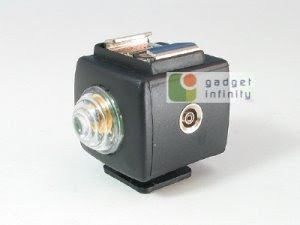by Susheel Chandradhas
Myth Buster
So what’s this myth that we’re talking about? The myth that more megapixels mean better pictures!
Lets start with a pixel (short for picture element). A pixel is the smallest element of a digital photograph. It represents a single dot in an array that together make up an electronic image. Let’s say that you have an image that is 800X600 pixels in size, this means that there are 800 pixels in its width and 600 pixels in its height, totally making 480,000 pixels in the image. A megapixel is one million pixels (1,000,000 pixels) and 800X600 is only at 0.48 megapixels.
More megapixels do mean clearer pictures, but only when you’re printing them really big. On a computer screen at 1024X768, a picture taken by a 0.78 megapixel camera would fill up the entire screen! At 1280X1024, you would still only need a 1.3 megapixel camera! Is that interesting or what?
Print Size
I was recently looking up an entry in the photo.net forum about the maximum size prints that can be made from the Canon 5D’s pictures… and there are a lot of answers out there! Some people come up with ideas that are based on mis-information while others are just too carried away by the techie stuff. So let me give you some basics.
Math Class
Magazines and books print at 300 DPI (Dots Per Inch) while most photo labs print at 200 DPI (some print at 300 DPI). Now, a regular print is about 6′X4′ which means that you need only a picture with 1800 pixels in its width for an offset print or 1200 pixels for a photo print. That’s no so large Given that a regular camera frame is in the ration of 3:2, which means that your ideal picture to print at 6′X4′ in a magazine need not be any larger than 1800X1200 pixels i.e: 2.16 megapixels.
 But what about these newfangled “photorealistic” inkjet printers that print at 720 and 1440DPI? Well, they don’t need anything more than 300 DPI either. When a printer says that it is printing at 300 DPI, it actually means that it is spitting out 300 drops of ink onto a square inch of paper. 300 of those microlitre or picolitre droplets on a square inch of paper is not much, so with ‘photorealistic printing’ you need atleast 1440 drops per inch (DPI) to ensure that the paper is covered completely and that you see a smooth gradation of colour even if the print is viewed from close by.
But what about these newfangled “photorealistic” inkjet printers that print at 720 and 1440DPI? Well, they don’t need anything more than 300 DPI either. When a printer says that it is printing at 300 DPI, it actually means that it is spitting out 300 drops of ink onto a square inch of paper. 300 of those microlitre or picolitre droplets on a square inch of paper is not much, so with ‘photorealistic printing’ you need atleast 1440 drops per inch (DPI) to ensure that the paper is covered completely and that you see a smooth gradation of colour even if the print is viewed from close by.
Biggest Print
Now, what’s the largest print that you’re going to make with your best picture? most people would not enlarge their prints beyond 8″X12″ which translates into about 3.8 megapixel at 200 DPI (photolab quality) or 8.6 Megapixel at 300 DPI (offset print quality). Everyone who is going to use their cameras to illustrate a coffee table book please put up their hands… I don’t see many…
My suggestion is that the people with the hands in the air buy one of the new Digital SLR cameras with upwards of 10 Megapixel sensors, to ensure a high enough resolution picture for their offset prints. Everyone else can stay at below 5 Megapixels and still be happy with amazing detail in their pictures, even when enlarged! Personally, I am entirely satisfied with photo printing at 200 dpi. They are sharp, clear and have excellent colour contrast.
So well then, what about the better pictures… like I’ve said earlier, its the photographer who can make a picture better, not the equipment. Aren’t you so much more likely to enlarge a great picture taken with a simple camera than to enlarge a drab one taken with a sophisticated one? And now you know that it doesn’t take a ridiculously high number of megapixels to get a large print, so dont worry about the megapixels, worry about how you take the photograph.
Happy shooting Amigos!

 $9.95
$9.95 



